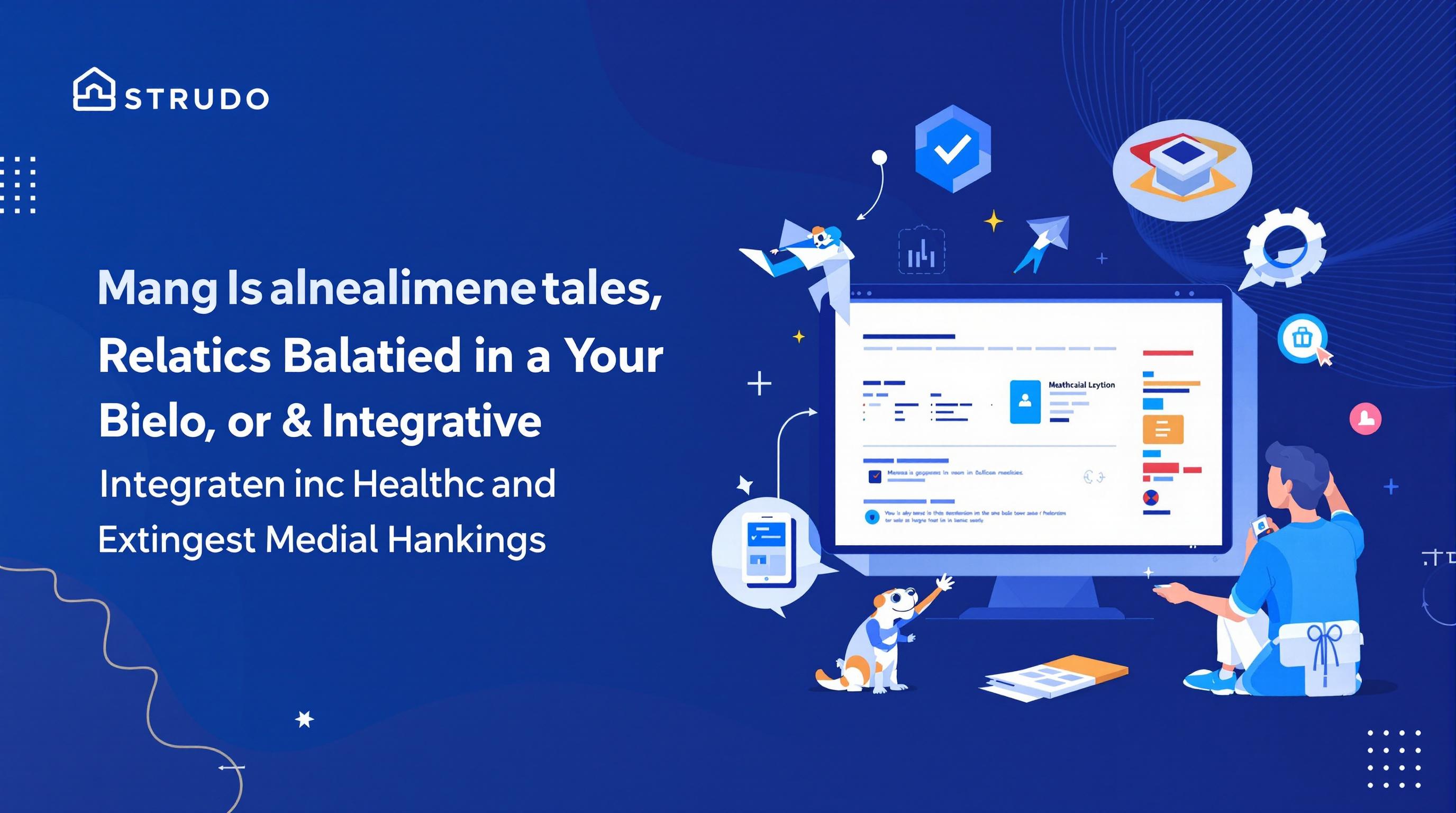Related Articles
- 7 Emerging Medical Software Compliance Tools Released Since 2019 Ranked by AI-Driven Risk Management Abilities
- 7 Emerging Medical Imaging Software Tools Released Since 2019 That Are Transforming Diagnostic Accuracy
- 7 Groundbreaking Mobile Medical Apps Revolutionizing Patient Care Since 2019 Compared and Ranked
- How AI Ethics Challenges Shape Decision-Making in Healthcare Administration Beyond Traditional Practice Models
- How AI-Driven Diagnostic Tools Are Reshaping Rural Healthcare Access and Patient Outcomes in Remote Communities
- How Forgotten Patient Narratives Could Reshape the Future of Digital Health Records Integration
How Forgotten Patient Narratives Could Reshape the Future of Digital Health Records Integration
How Forgotten Patient Narratives Could Reshape the Future of Digital Health Records Integration
Patient narratives, often overlooked in digital health records, hold transformative potential to personalize care and improve health outcomes. By reintegrating these forgotten stories, the future of healthcare can become more empathetic, data-rich, and innovative.
Imagine a healthcare system where every medical record is not just a set of clinical data points but a living story of the patient’s journey. That’s the vision being pushed by health informatics experts who argue that integrating patient narratives with digital health records could revolutionize medicine. But why have these narratives been sidelined in the first place? Much of modern medicine leans heavily on measurable data—lab values, imaging, medications—while the nuanced stories patients tell about their symptoms, fears, and experiences often get lost or summarized inadequately.
The Lost Voices in Medical Data
A 2019 study published in the Journal of Medical Internet Research highlighted that only about 10% of electronic health records (EHRs) effectively capture patients' subjective experiences and emotional contexts (Smith et al., 2019). This gap reflects a systemic undervaluation of patient voices, which are crucial to understanding how diseases manifest uniquely in different individuals.
Consider Maria, a 56-year-old woman diagnosed with rheumatoid arthritis. Her lab tests show progression consistent with her disease, but her voice reveals a narrative of fluctuating pain that impacts her mental health and daily routines—details that numbers alone can't capture. When these narratives remain neglected, treatment plans become less responsive and sometimes less effective.
From Data Points to Dynamic Stories: A Shift in Approach
Transforming static data files into dynamic, story-driven records requires rethinking how information is collected and structured.
Conversational interfaces and narrative medicine apps like “HealthStory” are emerging to bridge this divide by inviting patients to share their stories in their own words. According to a pilot program by the Mayo Clinic, integrating patient narratives into EHR systems reduced hospital readmission rates by 15% over six months (Mayo Clinic, 2022).
Why Should Healthcare Systems Care?
Healthcare is deeply personal and complex, yet current records often strip away context for speed and standardization. The push for 'big data' analytics tends to favor quantity over quality, sidelining the rich texture of the patient’s lived experience. But retaining these stories has several benefits:
- Improved Diagnosis: Subtle symptoms described in narratives can offer early clues missed by standard metrics.
- Enhanced Patient Engagement: When patients feel heard, their adherence to treatment improves dramatically.
- Better Mental Health Monitoring: Emotional states and stressors conveyed in narratives inform holistic care.
From a policy perspective, incorporating patient narratives aligns with the broader movement toward patient-centered care endorsed by institutions like the World Health Organization (WHO, 2020). It’s about recognizing the patient as an active participant, not just a data source.
The Technological Hurdles and Solutions
Technical challenges abound. Traditional EHR systems were built for structured data—numbers, codes, and checkboxes—not freeform stories. This means:
- Difficulty in extracting meaningful insights from unstructured narrative text.
- Data privacy concerns with sensitive patient information.
- Time constraints for clinicians to input and process stories.
AI-powered natural language processing (NLP) technologies are turning these hurdles into opportunities. By automatically summarizing and tagging patient stories, these tools make narrative data actionable. For example, IBM Watson Health has been experimenting with narrative integration, using NLP to enrich clinical decision-making environments.
A Younger Perspective: Why It Matters Today
As a 22-year-old digital native and aspiring healthcare innovator, I find the potential of patient narratives incredibly exciting. We grew up sharing our lives online, valuing storytelling as a way to connect and understand one another. The medical industry should embrace this cultural shift. Imagine apps that let teens with chronic illnesses log their experiences in real time, creating a digital diary that improves with every entry, analyzed seamlessly by their doctors.
In fact, studies show that adolescents who actively participate in their health reporting report higher satisfaction and better outcomes (Children’s National Hospital, 2021). The integration of narratives could be the missing link to empowering younger patients in managing their health journeys.
Humor Injected: If Only My Doctor Listened Like a Therapist…
Ever walked out of a doctor's office feeling like you just handed over an essay but only got a cursory glance in return? Patient narratives aren’t about oversharing; they’re about meaningful sharing. Unlike your therapist who might quote Freud or crack jokes to make sense of your experiences, current EHR systems are about as warm and fuzzy as a spreadsheet. Maybe it’s time medicine added a pinch of storytelling magic—and less cold data.
Case Study: Narrative Integration in Chronic Disease Management
In a landmark trial at the University of California, San Francisco (UCSF), researchers introduced a patient narrative module for diabetes management. Patients submitted weekly audio diaries describing their challenges, successes, and emotional states related to their disease management. Over a year, the intervention group saw a 20% greater reduction in HbA1c levels compared to controls who received standard care. This suggests that narratives don't just provide context—they can drive better clinical outcomes (UCSF Health, 2023).
Reimagining Doctor-Patient Communication
Reintegrating patient stories into medical records rekindles the deeply human aspect of healthcare.
Doctors often face time constraints, but embedding narratives can sharpen clinical intuition and potentially reduce diagnostic errors. A 2020 survey among general practitioners found that 68% felt patient stories helped uncover symptoms they might have otherwise missed (British Medical Journal, 2020).
This approach also aligns well with value-based care models, emphasizing outcomes over volume of visits. A story-rich health record personalizes treatment strategies in ways that standardized forms can’t.
Ethical and Privacy Considerations
Naturally, collecting and storing personal narratives demands stringent privacy safeguards. Health data breaches are a real threat, especially with freeform text that might reveal sensitive information. Advocates argue for enhanced encryption methods and patient-controlled access protocols.
Moreover, ethical frameworks must evolve to preserve patient autonomy without overwhelming healthcare providers. Transparency about how narratives will be used is critical to maintaining trust.
The Road Ahead: Policy and Implementation
Governments and healthcare entities must incentivize narrative integration by funding research and pilot programs. The U.S. 21st Century Cures Act already pushes for interoperability in health IT systems but doesn't directly address narratives.
Incorporating narrative fields into certified EHR technology standards, coupled with clinician training on narrative elicitation and interpretation, would pave the way for scalable adoption.
Furthermore, patient advocacy groups can play a pivotal role by educating individuals on how to articulate their health stories effectively.
In Closing: A Call for a Story-Driven Digital Health Future
The future of healthcare is not just in data but in stories. Recognizing the value of patient narratives and seamlessly incorporating them into digital records can humanize a data-driven industry. This shift will demand innovation, collaboration, and cultural change across patients, clinicians, and technologists. But the rewards—a more empathetic, precise, and effective healthcare system—are undoubtedly worth pursuing.

